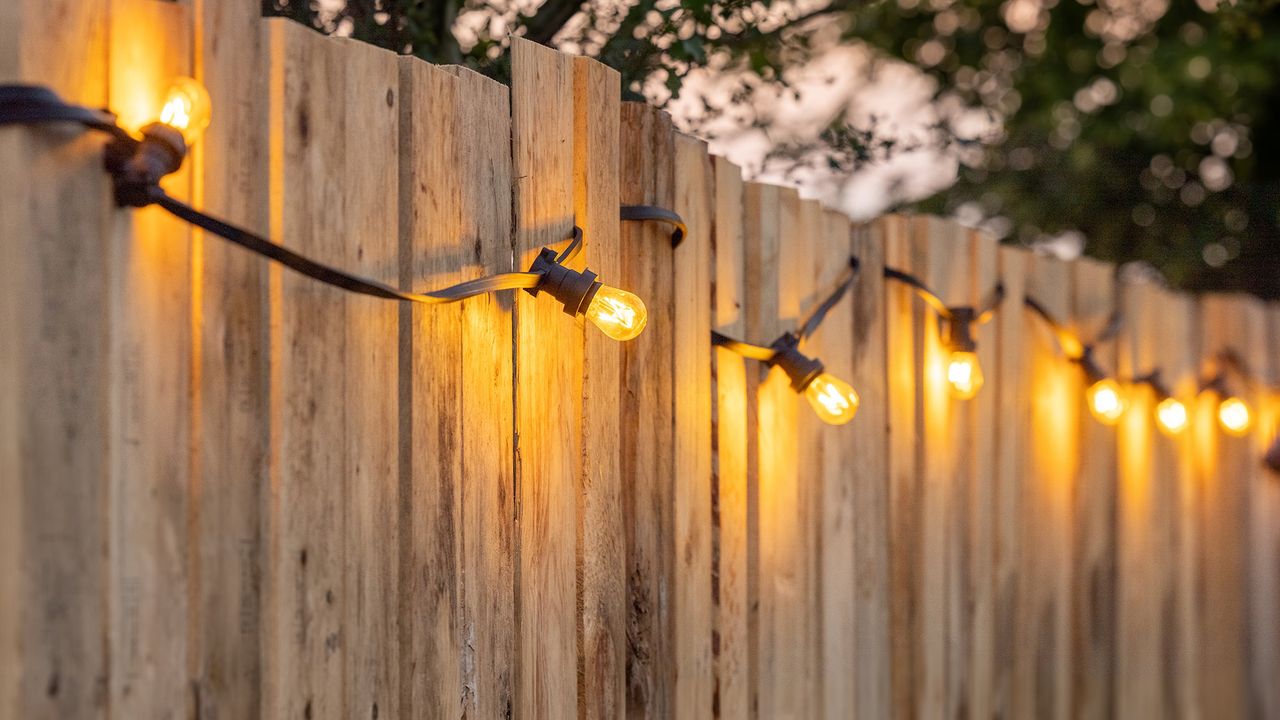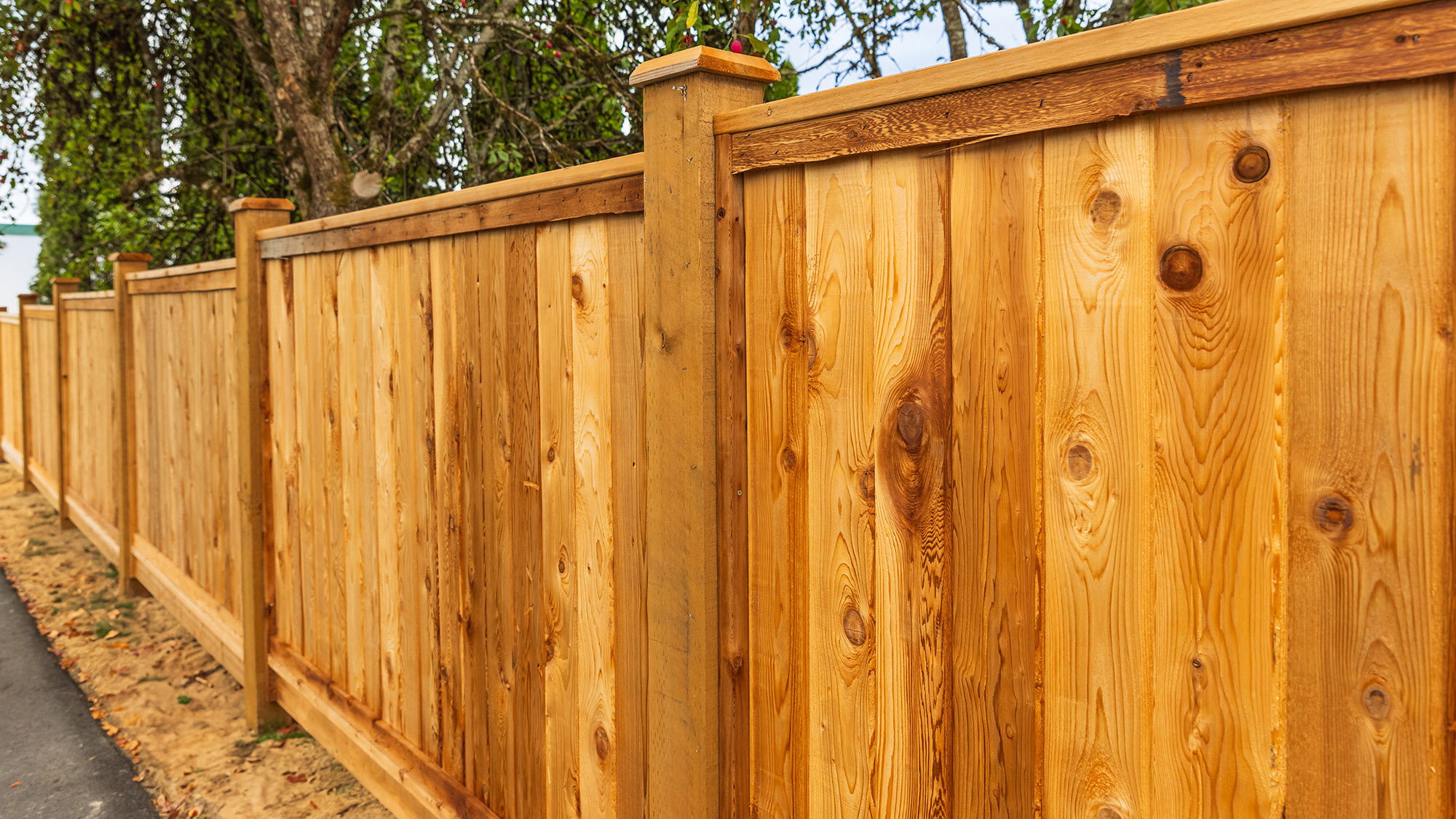
The summer season is the prime time to decorate your backyard with the best solar lights, and I’m in favor of the more the merrier. But, before you get too carried away draping fairy lights across the entirety of your yard, you could be on the wrong side of the law without realizing it.
While it’s not a problem to hang string lights across awnings, porches and trellises within your boundary, anything on the edge of your property could be a problem. So to prevent you from falling out with your neighbors, I’ve called in the expertise of real estate and garden experts to discover what is and isn’t allowed. Here's what you need to know.
Who owns the fence?

Leon Fisher, Real Estate Advisor at Zook Cabins, says, “A fence isn’t just wood and nails. It’s a legal boundary, and one mistake can turn into a fight that costs thousands of dollars and months of stress.”
So to avoid a costly mistake when hanging fairy lights, he warns, “Never assume a fence belongs to you just because it faces your yard.” If you don’t already know who owns the fence, you’ll need to find a property survey or recent boundary reports. Fisher says these documents will show the “true line."
Fishers also adds that these laws come from state and local codes, and Homeowner Association (HOA) bylaws, if you have one.
“A fence isn’t just wood and nails. It’s a legal boundary"
Leon Fisher, Real Estate Advisor at Zook Cabins
However, if you need help, Ben Ashton, CEO at Rocky Mountain Turf, advises calling on a surveyor “to use existing records to identify and mark your property lines.”
“In most cases, a fence belongs to the property it sits on. If it’s right on the line, ownership may be shared — and state laws often spell that out”, says Fisher.
And he gives the example, “In Pennsylvania, the 'partition fence' law says neighbors share responsibility for a boundary fence, including splitting costs when it needs replacing.
However, when there is a clear owner, without shared ownership, Ben Michael, Attorney at Michael & Associates, confirms that there’s not much you can do if your neighbor owns the fence. “If your neighbor paid for the fence and it’s on their side of the boundary line, you cannot legally varnish or paint it without their permission,”
What’s more, you’d also be wise to ask for permission to hang fairy lights, as you could be liable if you damage the fence.
The basic rule
When it comes to fence ownership and what you can or can’t do to it, it comes down to the basic rule. “You can’t make changes unless you own the fence or have written permission from the owner,” explains Fisher.
Hanging string lights

Painting a fence is a complete no-no, even the side facing your yard, with Fisher adding, “It’s someone else’s property and painting without consent is treated like altering their car.”
He says, if you do want to paint your fence, “a signed agreement is the cheapest insurance you’ll ever buy," or else you could end up paying damages for “defacing” a fence.
If that fence warps or rots from added weight or moisture, liability lands on you.
While you might think hanging fairy lights on a fence is less invasive than giving it a lick of paint, be cautious. “Hanging string lights or fixtures also counts as altering the structure,” says Fisher. “Hooks, wires, or clips all create stress on the boards. If that fence warps or rots from added weight or moisture, liability lands on you.”
What about accidental damage?
Even accidental damage almost always falls on the person who caused it.
“If string lights short out and spark a fire or plant roots rot the boards, the owner can claim not just repair costs but also related damages. In small claims court, repairs alone can run $500 to $1,500, plus filing fees,” adds Fisher.
Ignoring the rules can mount up, at the best Fisher says you’re looking at a repair bill, “At the worst, HOA fines stack up: $250 for a first offense, $1,000 for a repeat, “ and he adds, “If it escalates to court, a judge can order you to undo every change, pay damages, and cover legal costs.”
So, to protect yourself and your wallet, Fisher advises, “Before you make any changes to a fence, check your property survey, talk to your neighbor, and get everything in writing. That single step prevents 90% of disputes.”
Alternative ways to decorate your backyard with lighting

Apart from attaching string lights to your fencing, there are plenty of other ways to use outdoor lighting in your backyard, although you should avoid making these backyard lighting mistakes.
String lights can be hung from trees, placed along trellises, pagodas and within porches, while solar spotlights can be staked in the ground and positioned near walkways or used to illuminate specimen plants. For the best experience, consider smart solar lights, which will give you greater control with settings.







